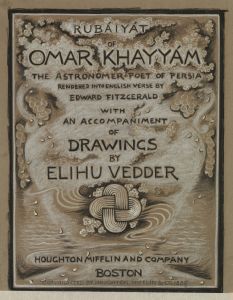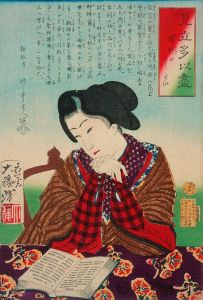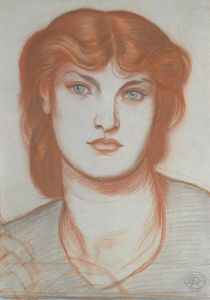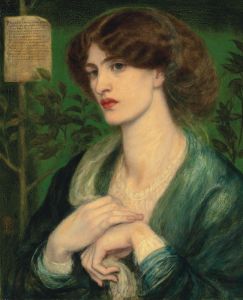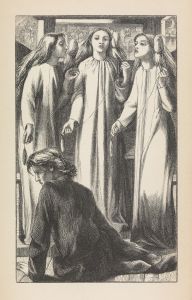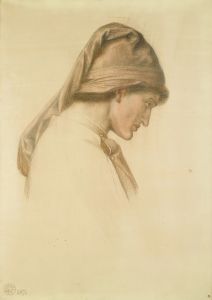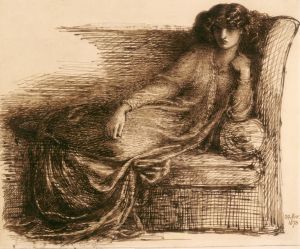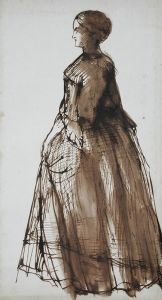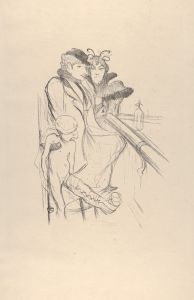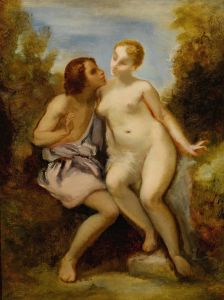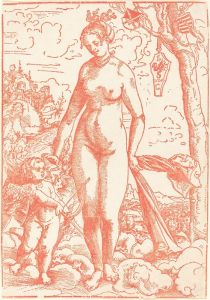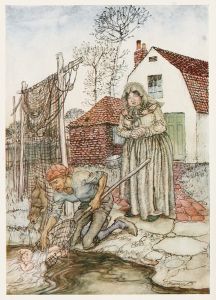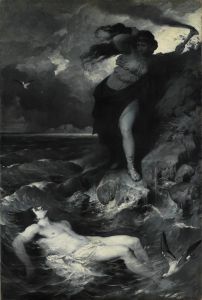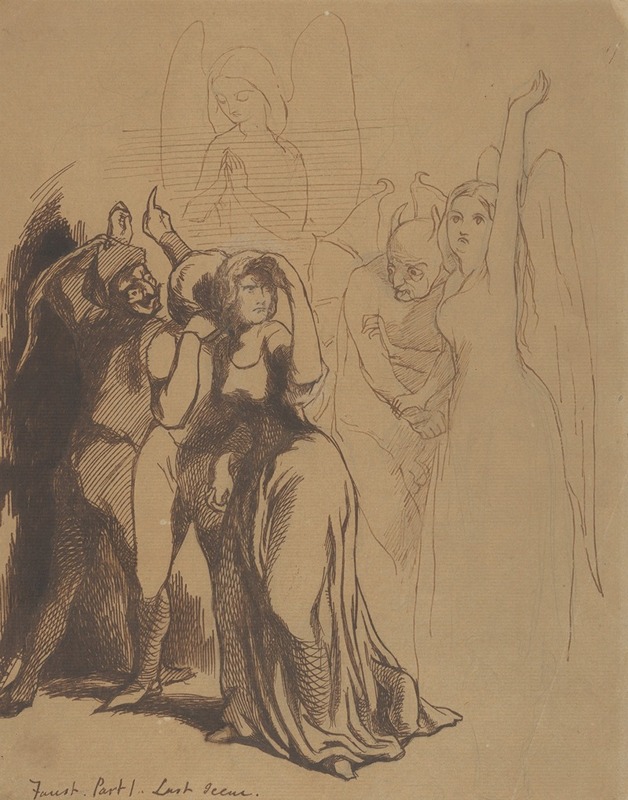
Faust; Part 1. Last Scene
A hand-painted replica of Dante Gabriel Rossetti’s masterpiece Faust; Part 1. Last Scene, meticulously crafted by professional artists to capture the true essence of the original. Each piece is created with museum-quality canvas and rare mineral pigments, carefully painted by experienced artists with delicate brushstrokes and rich, layered colors to perfectly recreate the texture of the original artwork. Unlike machine-printed reproductions, this hand-painted version brings the painting to life, infused with the artist’s emotions and skill in every stroke. Whether for personal collection or home decoration, it instantly elevates the artistic atmosphere of any space.
Dante Gabriel Rossetti's painting "Faust; Part 1. Last Scene" is an evocative work that draws inspiration from Johann Wolfgang von Goethe's tragic play "Faust." Rossetti, a prominent figure in the Pre-Raphaelite Brotherhood, was known for his deep interest in literature and his ability to translate literary themes into visual art. This painting is a testament to his skill in capturing the dramatic and emotional essence of literary works.
The painting illustrates the final scene of the first part of Goethe's "Faust," a story that explores themes of ambition, desire, and redemption. In this scene, Faust, a scholar who makes a pact with the devil, Mephistopheles, is confronted with the consequences of his actions. The narrative reaches a climax as Faust's beloved, Gretchen (also known as Margarete), is imprisoned and facing execution for the crimes she committed under the influence of Faust and Mephistopheles. The scene is charged with emotion as Gretchen, in her cell, prays for salvation and forgiveness.
Rossetti's interpretation of this scene focuses on the emotional turmoil and spiritual conflict experienced by the characters. His use of color, light, and composition enhances the dramatic tension of the moment. The painting likely features Rossetti's characteristic attention to detail and symbolism, which are hallmarks of the Pre-Raphaelite style. This movement sought to return to the detail, intense colors, and complex compositions of early Renaissance art, and Rossetti was a leading figure in this artistic revival.
The Pre-Raphaelite Brotherhood, founded in 1848 by Rossetti, William Holman Hunt, and John Everett Millais, aimed to reject the mechanistic approach to art that had become prevalent in the wake of the Industrial Revolution. Instead, they sought to imbue their works with a sense of spirituality and emotional depth, often drawing on literary and historical sources for inspiration. Rossetti's "Faust; Part 1. Last Scene" is a prime example of this approach, as it not only illustrates a pivotal moment in a classic literary work but also invites viewers to engage with the underlying themes of morality and redemption.
While specific details about the creation and exhibition history of "Faust; Part 1. Last Scene" are not extensively documented, Rossetti's broader body of work and his contributions to the Pre-Raphaelite movement are well-recognized. His paintings often feature rich, vibrant colors and a focus on the human form, with an emphasis on capturing the emotional and psychological states of his subjects.
In summary, Dante Gabriel Rossetti's "Faust; Part 1. Last Scene" is a significant work that reflects the artist's literary interests and his commitment to the ideals of the Pre-Raphaelite Brotherhood. Through his depiction of Goethe's tragic characters, Rossetti explores complex themes of love, sin, and redemption, inviting viewers to reflect on the moral implications of the story.





